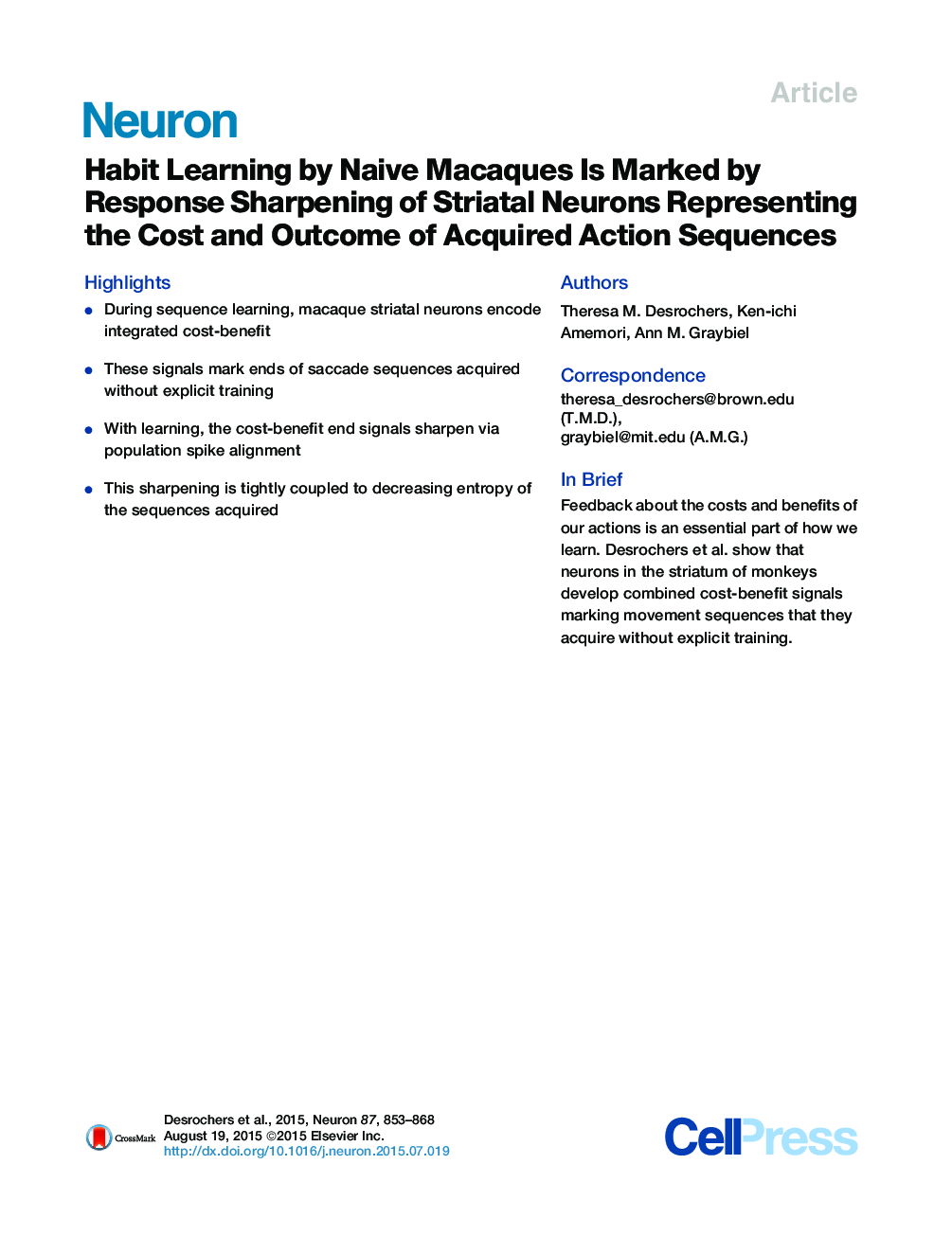| Article ID | Journal | Published Year | Pages | File Type |
|---|---|---|---|---|
| 4320826 | Neuron | 2015 | 16 Pages |
•During sequence learning, macaque striatal neurons encode integrated cost-benefit•These signals mark ends of saccade sequences acquired without explicit training•With learning, the cost-benefit end signals sharpen via population spike alignment•This sharpening is tightly coupled to decreasing entropy of the sequences acquired
SummaryOver a century of scientific work has focused on defining the factors motivating behavioral learning. Observations in animals and humans trained on a wide range of tasks support reinforcement learning (RL) algorithms as accounting for the learning. Still unknown, however, are the signals that drive learning in naive, untrained subjects. Here, we capitalized on a sequential saccade task in which macaque monkeys acquired repetitive scanning sequences without instruction. We found that spike activity in the caudate nucleus after each trial corresponded to an integrated cost-benefit signal that was highly correlated with the degree of naturalistic untutored learning by the monkeys. Across learning, neurons encoding both cost and outcome gradually acquired increasingly sharp phasic trial-end responses that paralleled the development of the habit-like, repetitive saccade sequences. Our findings demonstrate an integrated cost-benefit signal by which RL and its neural correlates could drive naturalistic behaviors in freely behaving primates.Video Abstract To view the video inline, enable JavaScript on your browser. However, you can download and view the video by clicking on the icon belowHelp with MP4 filesOptionsDownload video (78718 K)
